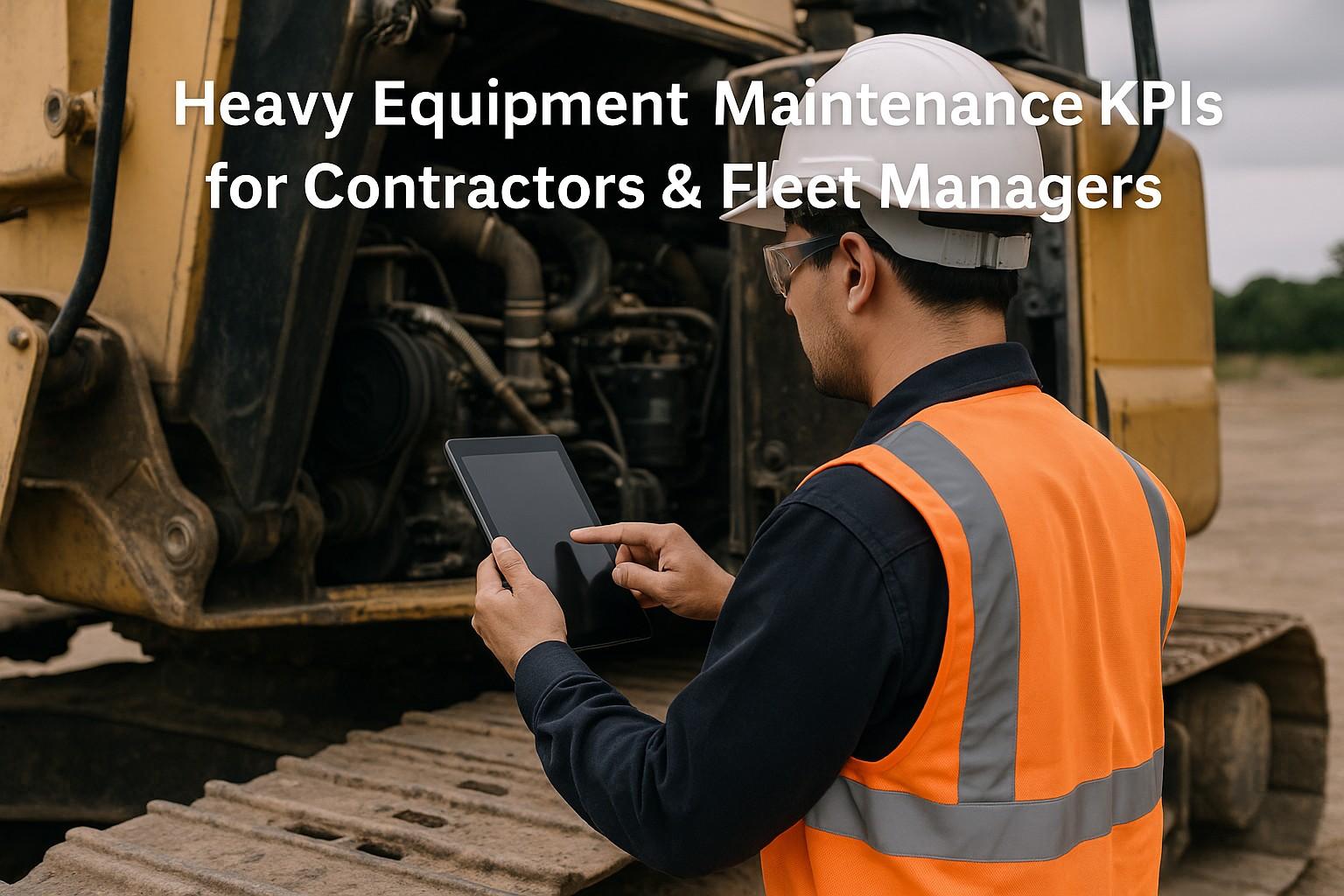Construction fleet operators waste an average of $47,000 annually per 10-vehicle fleet through fuel theft, inefficient routing, and unmonitored consumption patterns. With diesel fuel costs averaging $3.85 per gallon across US markets, even modest fuel waste represents significant operational expenses that directly impact project profitability and competitive positioning. Modern telematics systems capture vehicle location and basic operational data, but without integrated fuel sensors, operators miss critical fuel consumption insights that enable 25-35% cost reductions and theft prevention capabilities worth $15,000-$85,000 annually per fleet.
Integrating fuel sensors with existing telematics platforms transforms basic GPS tracking into comprehensive fuel management ecosystems that deliver real-time consumption monitoring, theft detection and efficiency optimization across diverse construction operations. This integration eliminates the need for complete system replacement while adding advanced fuel monitoring capabilities that generate immediate cost savings and operational insights. More importantly, seamless sensor integration with established telematics platforms like Teltonika, ESCORT, NAVTELECOM, and Neomatica provides construction companies with enterprise-grade fuel management without disrupting existing operational workflows or requiring extensive retraining investments.
Annual Fleet Fuel Management Impact
Ready to Transform Your Fuel Management Strategy?
Discover proven integration protocols that unlock significant cost savings and operational efficiency.
The Strategic Imperative: Why Fuel Sensor Integration Matters
Construction operations face mounting pressure to optimize fuel consumption while maintaining productivity standards that ensure project delivery and profitability. Traditional telematics systems provide valuable location and operational data, but lack the granular fuel consumption insights necessary for comprehensive cost management and theft prevention. Integrating fuel sensors with existing telematics platforms creates unified monitoring ecosystems that combine positional intelligence with precise fuel data, enabling operators to identify inefficiencies, prevent theft, and optimize routing decisions that collectively generate 25-35% fuel cost reductions.
The financial impact of unmonitored fuel consumption extends beyond direct fuel costs to encompass theft losses, inefficient equipment operation, and missed optimization opportunities that cumulatively cost construction companies $35,000-$125,000 annually per fleet. Modern fuel sensor integration addresses these challenges through real-time monitoring, automated alert systems, and comprehensive analytics that transform fuel management from reactive expense tracking into proactive operational optimization.
Leading Telematics Integration Platforms and Compatibility
Successful fuel sensor integration depends on platform compatibility, communication protocols, and data processing capabilities that vary significantly across telematics providers. Leading platforms like Teltonika, ESCORT, NAVTELECOM, and Neomatica offer different integration approaches, sensor support levels, and configuration requirements that impact deployment complexity and operational effectiveness. Understanding these platform-specific characteristics enables informed integration decisions that maximize fuel monitoring capabilities while minimizing implementation challenges.
Modern telematics platforms support multiple sensor types through standardized communication protocols, but optimal integration requires matching sensor capabilities with platform features and operational requirements. This technical alignment ensures reliable data transmission, accurate analytics, and seamless user experience across diverse construction environments and equipment types.
- ✓ Teltonika Integration supporting 50+ fuel sensor models with RS485/CAN communication protocols and advanced filtering algorithms
- ✓ ESCORT Platform compatibility with capacitive and ultrasonic sensors through specialized ESCORT protocols and proprietary algorithms
- ✓ NAVTELECOM Systems offering universal sensor support with customizable calibration and real-time data validation features
- ✓ Neomatica Integration providing cloud-based analytics with machine learning algorithms for consumption pattern analysis
- ✓ Multi-Platform Support enabling sensor data sharing across different telematics systems for comprehensive fleet management
- ✓ API Integration capabilities allowing custom applications and third-party software to access integrated fuel and location data
Technical Integration Architecture and Communication Protocols
Fuel sensor integration requires sophisticated communication architectures that enable real-time data transmission, processing, and synchronization between sensors, telematics devices, and management platforms. Modern integration approaches utilize multiple communication protocols including RS485, CAN Bus, and wireless technologies that ensure reliable data transfer under challenging construction environments. Understanding these technical foundations enables optimal sensor selection and configuration decisions that maximize monitoring accuracy and system reliability.
Advanced integration platforms incorporate data validation algorithms, calibration management, and error correction capabilities that ensure fuel measurement accuracy despite environmental factors, temperature variations, and operational vibrations common in construction applications. These technical capabilities differentiate professional-grade integrations from basic sensor connections that may provide inconsistent or unreliable fuel data.
- ✓ Telematics platform compatibility analysis including protocol support, sensor capacity, and integration capabilities
- ✓ Fuel sensor technology evaluation considering accuracy requirements, environmental conditions, and vehicle-specific constraints
- ✓ Communication protocol configuration including RS485 wiring, CAN Bus integration, and wireless connectivity setup
- ✓ Data flow architecture design ensuring reliable transmission and processing of integrated sensor and location data
- ✓ Calibration methodology development for precise fuel measurement across different tank configurations and fuel types
- ✓ Integration testing protocols to validate data accuracy and system reliability before full deployment
- ✓ Professional sensor installation with proper mounting, wiring, and environmental protection for construction environments
- ✓ Telematics device configuration including sensor detection, communication protocol setup, and data transmission parameters
- ✓ Calibration execution with precise fuel level mapping and accuracy validation across operational fuel ranges
- ✓ Alert system configuration for theft detection, consumption anomalies, and maintenance requirements based on fuel data
- ✓ User interface customization enabling fleet managers to access integrated fuel and location data through unified dashboards
- ✓ Training program implementation covering system operation, alert interpretation, and optimization strategies for operational staff
Cost-Benefit Analysis and ROI Projections
Fuel sensor integration investments typically range from $12,000-$45,000 for complete fleet implementation, including sensors, installation, configuration, and training costs. However, the financial returns from theft prevention, efficiency improvements, and operational optimization consistently exceed initial investments by 400-700% within 18-24 months of deployment. These returns accelerate as integrated systems enable continuous optimization and increasingly sophisticated fuel management strategies.
Beyond direct fuel cost savings, integrated monitoring systems provide secondary benefits including reduced maintenance costs, improved equipment utilization, and enhanced regulatory compliance that collectively add 25-40% additional value to the primary fuel savings calculations. This comprehensive value proposition makes fuel sensor integration one of the highest-ROI technology investments available to construction fleet operators.
- ✓ Hardware costs averaging $800-$1,500 per vehicle including sensors, wiring, and installation components
- ✓ Professional installation services ranging $300-$600 per vehicle for proper sensor mounting and system configuration
- ✓ Software licensing and platform fees typically $25-$50 monthly per vehicle for comprehensive monitoring capabilities
- ✓ Training and implementation support costs ranging $2,000-$5,000 per fleet for optimal system utilization
- ✓ Annual savings projections of $6,500-$12,500 per vehicle through theft prevention and efficiency improvements
- ✓ Payback period calculations showing 8-16 month recovery timeframes for typical construction fleet operations
Advanced Analytics and Performance Optimization
Integrated fuel and telematics data enables sophisticated analytics capabilities that transform basic monitoring into predictive optimization platforms. Machine learning algorithms analyze consumption patterns, route efficiency, and operational factors to identify optimization opportunities that extend beyond simple fuel tracking. These advanced capabilities enable continuous improvement programs that generate compounding savings and operational advantages over time.
Modern analytics platforms process millions of data points to identify subtle correlations between operational factors and fuel consumption that would be impossible to detect through manual analysis. This analytical power enables precision optimization strategies that maximize fuel efficiency while maintaining or improving operational productivity across diverse construction environments.
- ✓ Predictive consumption modeling based on route analysis, weather conditions, and equipment load factors
- ✓ Operator performance analytics comparing fuel efficiency across different drivers and operational techniques
- ✓ Route optimization algorithms incorporating fuel consumption data with traffic patterns and delivery requirements
- ✓ Equipment utilization analysis identifying optimal operational parameters for maximum fuel efficiency
- ✓ Maintenance correlation analysis linking fuel efficiency degradation with equipment service requirements
- ✓ Custom reporting capabilities for project-specific fuel analysis and cost allocation across multiple job sites
Regulatory Compliance and Documentation Benefits
Integrated fuel monitoring systems provide comprehensive documentation capabilities that support multiple regulatory compliance requirements including EPA emissions reporting, DOT transportation regulations, and OSHA safety standards. Automated data collection and reporting eliminate manual documentation burden while ensuring accuracy and completeness that exceed regulatory requirements. This compliance automation reduces administrative costs while minimizing violation risks that can cost $15,000-$75,000 per incident.
Modern compliance capabilities extend beyond basic reporting to include audit trail maintenance, environmental impact tracking, and safety documentation that support comprehensive regulatory management programs. These capabilities position construction companies as industry leaders in environmental responsibility and operational transparency while reducing compliance-related risks and administrative overhead.
Implementation Success Strategies and Best Practices
Successful fuel sensor integration requires systematic planning, professional installation, and comprehensive training programs that ensure optimal system performance and user adoption. The most effective implementations follow proven methodologies that address technical requirements, operational considerations, and change management factors that determine long-term success. Construction companies achieving 95%+ integration success rates invest in comprehensive deployment strategies that address both technical and organizational factors.
Long-term integration success depends on continuous optimization, regular system maintenance, and ongoing training programs that maximize system capabilities and user proficiency. Companies that view integration as an ongoing operational improvement process rather than a one-time technology deployment achieve 40-60% better results and longer-term savings compared to basic installation approaches.
The construction industry's increasing focus on operational efficiency and cost optimization makes fuel sensor integration a strategic necessity rather than an optional enhancement. Fleet operators who implement comprehensive integration strategies today will be best positioned to capitalize on emerging opportunities while avoiding the costly consequences of inefficient fuel management that characterize traditional operations.
Transform Your Fleet with Integrated Fuel Management
Start implementing proven integration strategies and join the ranks of America's most efficient construction fleets.
Book a Demo




